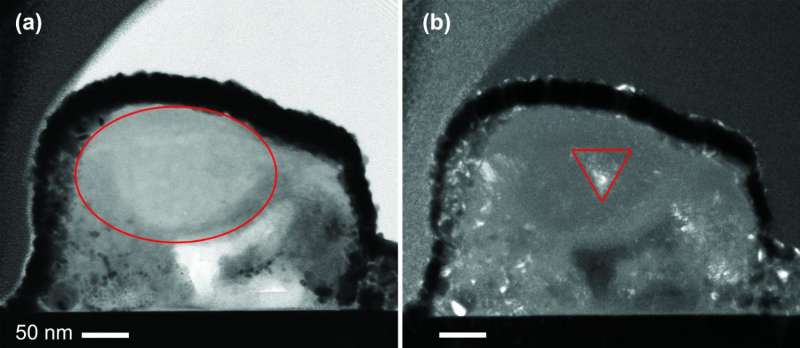Silicate stardust traces histories of dust in the galaxy

NASA scientists are revealing the histories of dust particles from dying stars that roved the Galaxy for millions of years before the sun and planets formed. These stardust grains survived the harsh environment of deep space and were found in meteorites on Earth.
During their journeys, these stardust grains were bombarded in space by high-energy cosmic radiation and shock waves from exploding stars, or supernovae. Scientists in the Astromaterials Research and Exploration Science Division at NASA's Johnson Space Center in Houston used state-of-the-art instrumentation to study the histories of these ancient silicate stardust grains.
A paper on the team's findings has been published in The Astrophysical Journal.
The coordinated laboratory study of these remnants of stars that were once light years away from us has revealed detailed information on the conditions in stellar atmospheres and in the Galaxy. "These tiny stardust grains reveal incredible details of their parent stars, their journey through the Galaxy and the earliest history of the Solar System. Astrophysics in the laboratory is a powerful complement to the traditional means of studying the cosmos with telescopes," said co-author Scott Messenger, NASA senior astromaterials and mission scientist.
The isotope signatures and atomic-scale structures were determined for individual grains of stardust that are smaller than 1/1000 of a millimeter in size. The small size of these grains makes these coordinated analyses especially challenging.
The silicate stardust grains were discovered by measuring their exotic isotopic compositions with the use of a high spatial resolution ion probe known as the NanoSIMS 50L. The isotopic compositions of stardust grains were imparted by nuclear reactions deep within the hearts of their parent stars and can be orders of magnitude different from the compositions of grains that formed in the Solar System. In particular, the abundance ratios of different isotopes of oxygen in silicate stardust are diagnostic of the type of star from which they came.
"About 1 in every 5,000 silicate grains from the meteorites we studied was produced by another star before our Solar System formed. After analyzing millions of silicate grains, we identified bona fide silicate stardust from three major dust producers in the Galaxy: red giant stars, explosive supernovae, and novae," said the leading author, Dr. Ann Nguyen, Jacobs cosmochemist at NASA's Johnson Space Center.
"The next step was to determine the chemistry and structure of these grains in order to answer questions such as, under what conditions did these grains form? How different were these conditions in stellar outflows compared to more violent stellar explosions? What types of environments did the grains encounter on their journey to our Solar System?"
These questions were addressed by carefully producing cross-sections of 9 silicate stardust grains. These cross-sections were a mere ~70 nanometers thick and were analyzed by co-author Lindsay Keller using another powerful instrument, the transmission electron microscope, or TEM.
"Coordinated analyses of these grains is a powerful approach. The isotopic measurements reveal that these grains originated from very different types of stars. Combining this information with the TEM observations provides us with unique insights into the physical and chemical conditions that existed when the grains formed," said Keller, NASA planetary scientist.
Many of the silicates were amorphous with a wide range of chemical compositions. The study also uncovered silicate crystals from red giants that likely formed at higher temperatures than the amorphous grains.
Evidence for radiation processing in space was found in two of the stardust grains studied, one from a red giant star and one from a supernova. Both of the grains have the same chemical composition consistent with the mineral enstatite. One grain is completely amorphous while the other retains a crystalline core.
"The chemical composition of the grains indicates they originally formed as crystals, but these grains later encountered high energy radiation in space sufficient to destroy their crystal structures. Evidence of this radiation exposure is extremely rare in silicate stardust. Most of the stardust grains that we studied seem to have escaped such processing," said Nguyen.
Journal information: Astrophysical Journal
Provided by NASA




















